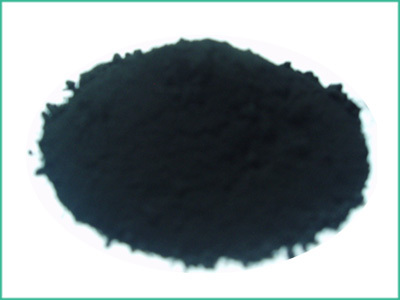Nano boron carbide powder CY-B4C1
Nano boron carbide powder CY-B4C1
Nano boron carbide powder CY-B4C1
- Detail
- Parameters
Main features
Nano boron carbide CY-B4C1, ultrafine boron carbide powder prepared by variable current laser ion beam gas-phase method, boron carbide, also known as black diamond, molecular formula B4C, usually gray black micro powder. It is one of the three hardest known materials (the other two being diamond and cubic boron nitride). Hard black glossy crystals.
The hardness is lower than industrial diamond, but higher than silicon carbide. Compared to most pottery, it has lower fragility. Has a large thermal neutron capture cross-section. Strong anti chemical effect. Not susceptible to erosion by heated hydrogen fluoride and nitric acid. Soluble in molten alkali, insoluble in water and acid.
The product has high purity, small particle size, uniform distribution, large specific surface area, high surface activity, and low loose density. It is an artificially synthesized superhard material with a hardness second only to diamond, a Mohs hardness of 9.46, a microhardness of 5600-6200Kg/mm2, a specific gravity of 2.52g/cm3, a melting point of 2250 ℃, and does not react with acid and alkali solutions. It has high chemical degree, neutron absorption, wear resistance, and semiconductor conductivity. It is one of the substances that is stable to acids and can be found in concentrated or dilute acidic or alkaline aqueous solutions. It has stable physical and chemical properties and is suitable for grinding, grinding, drilling, etc. of hard materials.
Technical parameters of nano boron carbide CY-B4C1 powder:
Nano boron carbide CY-B4C1 powder technical parameters: | |
碳化硼(Boron carbide) | B4C |
外观(appearance) | Black powder |
晶型(crystal form) | hexagonal |
纯度%(purity ) | 99.9 |
平均粒径(grain size) | 50-60nm |
比表面积(SSA ,m2/g) | 20-30 |
熔点(melting point) | 2250℃ |
比重(specific weight) | 2.52g/cm3 |
显微硬度(microhardness) | 5600—6200Kg/mm2 |
莫氏硬度(Moh's hardness) | 9.46 |
There are 100-200nm.
application area
1. Neutron absorption and radiation protection materials: Element B has a neutron absorption cross-section of up to 600 bars and is the main material used for deceleration components - control rods or radiation protection components in nuclear reactors;
2. Composite armor materials: Utilizing their lightweight, superhard, and high modulus characteristics, they are used as lightweight bulletproof vests and armor materials. The bulletproof farmer made of boron carbide is more than 50% lighter than the same type of steel bulletproof vest. Boron carbide is also an important bulletproof armor material for land-based armored vehicles, armed helicopters, and civil aircraft. Helicopters such as AH-64 Apache, Super Cobra, Super Puma, and Black Hawk have all been equipped with boron carbide armor;
3 Semiconductor industrial components and thermoelectric components: Boron carbide ceramics have semiconductor characteristics and good thermal conductivity, and can be used as high-temperature semiconductor components, as well as gas distribution disks, focusing rings, microwave or infrared windows, DC plugs, etc. in the semiconductor industry. The combination of B4C and C can be used as high-temperature thermocouple components, with temperatures up to 2300 ℃, and can also be used as radiation resistant thermoelectric components.
4 Mechanical seal components: The superhard properties and excellent wear resistance of boron carbide make it an important material for mechanical seals. Due to its relatively high cost, it is mainly used in some special mechanical sealing situations;
5 nozzle materials: The high hardness and excellent wear resistance of boron carbide CY-B4C1 make it an important nozzle material. Boron carbide nozzles have advantages such as long lifespan, relatively low cost, and time-saving. The lifespan of boron carbide nozzles is dozens of times longer than that of alumina nozzles, and many times longer than that of WC and SiC nozzles;
6. Refractory materials, fine engineering ceramics, such as high-precision nozzles, sealing rings, nuclear industry, national defense industry.
Packaging and storage
This product is an inert gas anti-static packaging and should be sealed and stored in a dry and cool environment. It should not be exposed to air for a long time to prevent moisture from causing aggregation and affecting dispersion performance and usage effectiveness.
